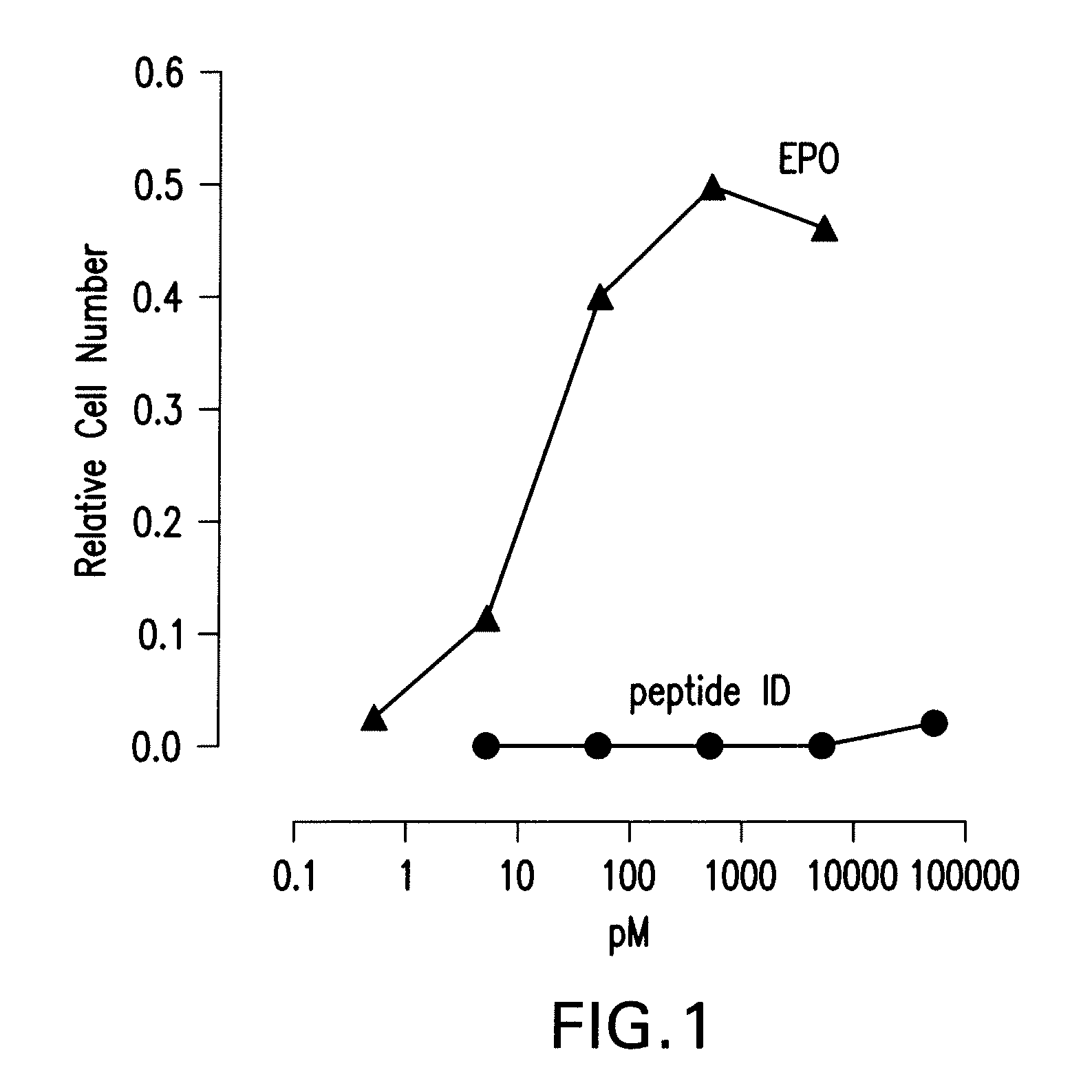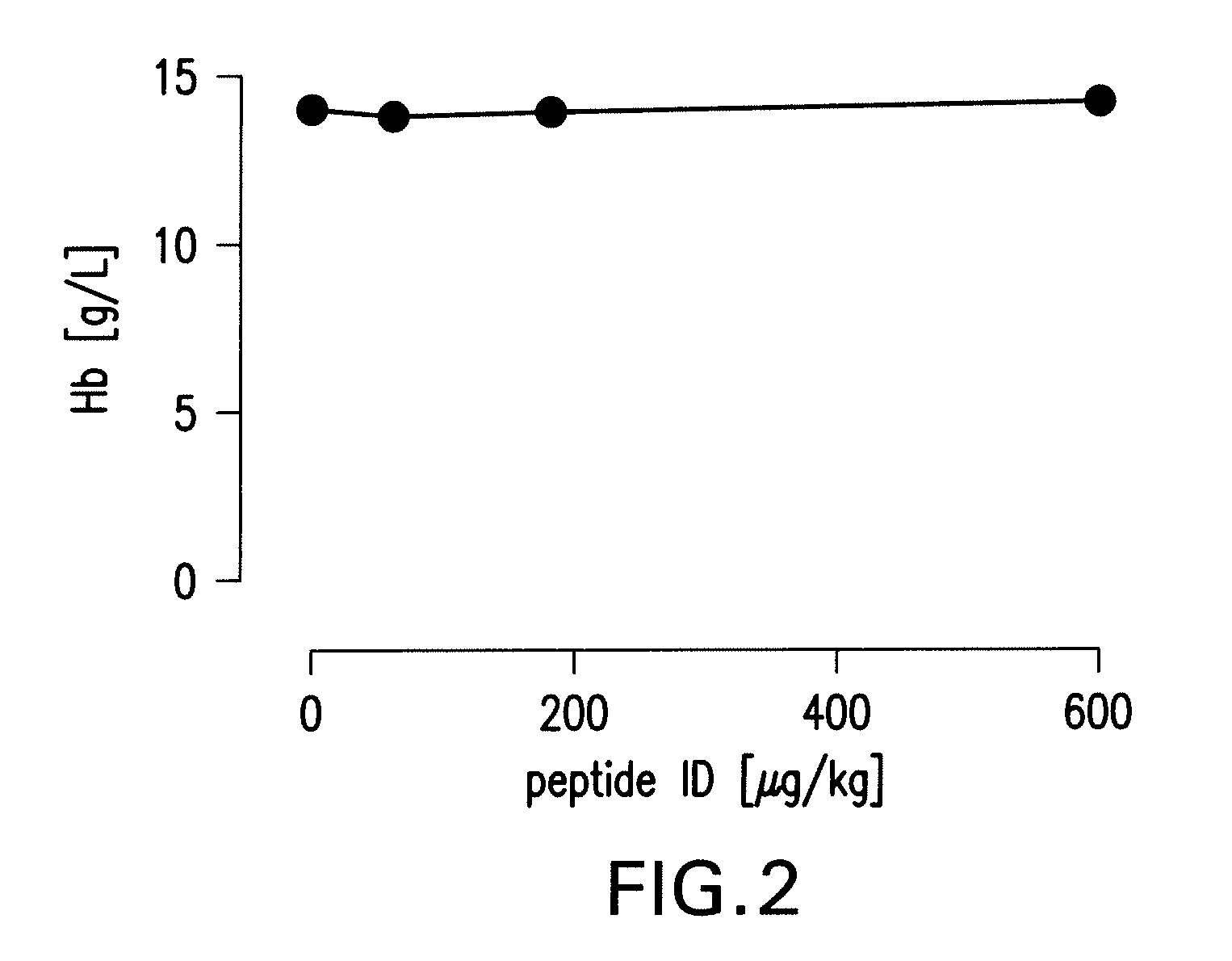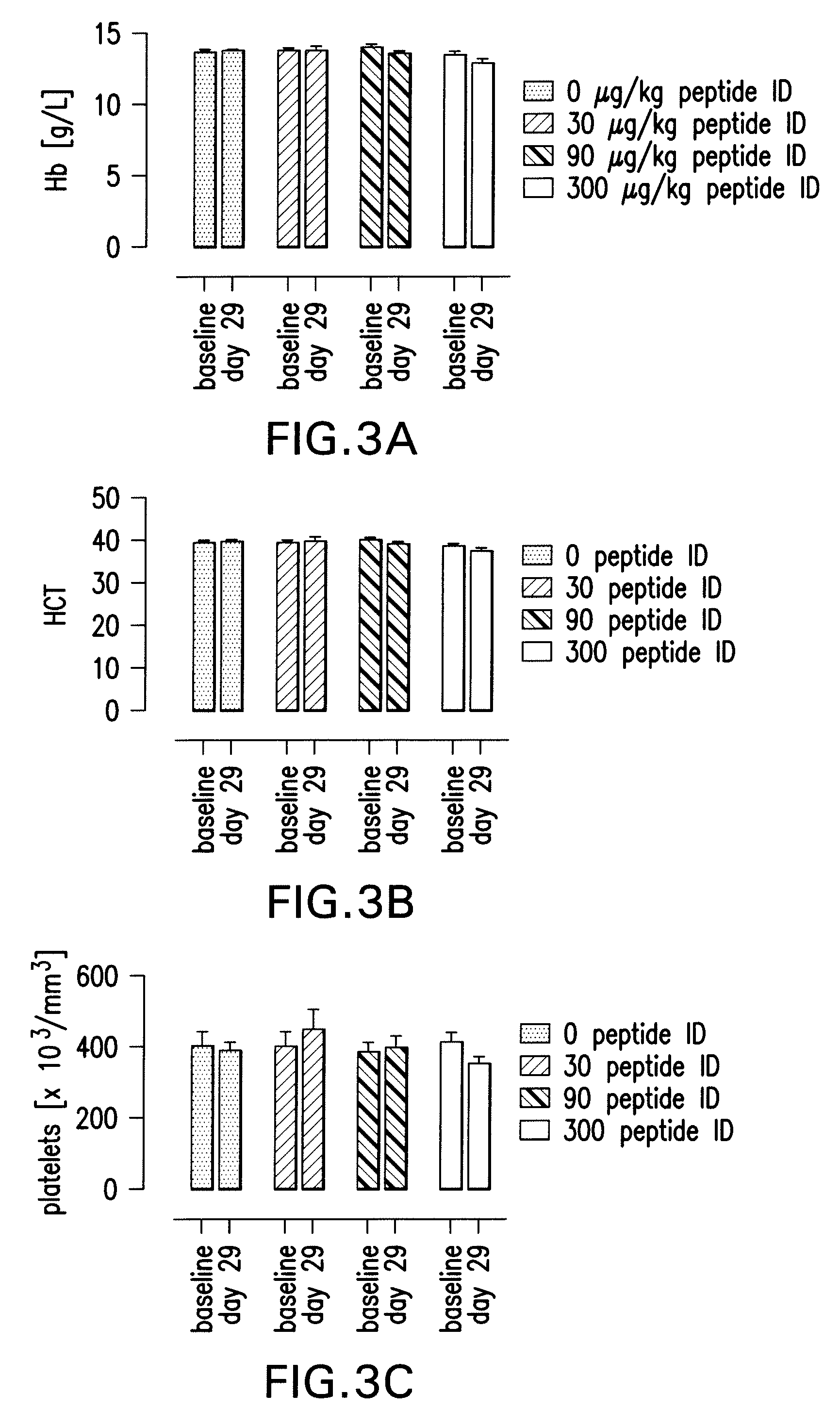Tissue protective peptides and peptide analogs for preventing and treating diseases and disorders associated with tissue damage
a tissue protective peptide and analog technology, applied in the direction of peptide/protein ingredients, depsipeptides, vector-based foreign material introduction, etc., can solve the problems of preventing the damage of epithelial cells, affecting the development of epithelial cells, and increasing the hematocrit of subjects, so as to prevent damage, effects or symptoms, and delay the onset.
- Summary
- Abstract
- Description
- Claims
- Application Information
AI Technical Summary
Benefits of technology
Problems solved by technology
Method used
Image
Examples
example 1
Method of Peptide Synthesis
[0562]A. Synthesis of Peptide A (SEQ ID NO:2, corresponding to EPO amino acid sequence 38-57) and Peptide B (SEQ ID NO:3, corresponding to EPO amino acid sequence 58-82).
[0563]Peptide A, SEQ ID NO:2, and Peptide B, SEQ ID NO:3, fragments of EPO, were synthesized using “in situ neutralization” Boc Chemistry stepwise solid-phase peptide synthesis, as described in Band, D., Chopra, N. and Kent, S., “Total Synthesis of Crambin,”J. AM. CHEM. SOC. 2004, 126, 1377-1383 (incorporated by reference herein in its entirety). Briefly, two fragments corresponding to EPO amino acid sequence 38-57 (peptide A, NITVPDTKVNFYAWKRMEVG, SEQ ID NO:2) and EPO amino acid sequence 58-82 (peptide B, QQAVEVWQGLALLSEAVLRGQALLV, SEQ ID NO:3) were synthesized on —OCH2-Pam-resins (free αcarboxyl peptides) or on HSCH2CH2CO-Leu-OCH2-Pam-Resin (αthioester peptides). During synthesis the side chains of various amino acids were protected as follows: Arg(Tos), Asn(Xan), Asp(OcHex), Cys(4-CH3Bz...
example 2
Tissue Protective Peptides and Peptide Analogs are Non-Erythropoietic
A. In Vitro Assessment
[0565]UT-7epo, a human erythropoietin-dependent leukemia cell line, was used for the determination of the erythropoietic potency of the peptides. UT-7epo cells (Deutsche Sammlung von Mikroorganismen and Zellkulturen (DSMZ), Cat. No. ACC 363) are grown in a complete RPMI-1640 medium with 10% FBS and 5 ng / ml erythropoietin. The proliferation / survival (=viability increase) response of the cells exposed to erythropoietin is mediated by the classical erythrocyte-type erythropoietin receptor and is a quantitative measure of the capacity of erythropoietin-variants to stimulate the classical erythropoietin receptor.
[0566]UT-7epo cells were transferred to fresh complete RPMI 1640 medium containing 10% donor calf serum, 4 mM L-glutamine, and supplemented with 5 ng / ml of recombinant human erythropoietin. The cells were maintained in 75 cm2 flasks with 20 ml of medium / flask in a humidified incubator with ...
example 3
Peptide or Peptide Analog is Tissue Protective in in Vitro Assays
[0570]Peptides and peptide analogs can be readily assessed for tissue protection using any number of in vitro assays. For example, protection from excitoxicity can be determined using kainite-induced death of mouse motoneurons. Spinal cords were obtained from 15-day old Sprague-Dawley rat embryos as previously described (Siren et al., 2001, Proc. Natl. Acad. Sci. USA, 98:4044, hereby incorporated by reference in its entirety). The ventral horn was trypsinized and centrifuged through a 4% BSA cushion for 10 min at 300×g. Cells (representing mixed neuron-glia culture) were seeded at a density of 2,000 cells / cm into 24-mm well plates precoated with poly-DL ornithine and laminin. Motoneurons were further purified by immunopanning and the cells were seeded at low density (20,000 cells / cm2) onto 24-mm well plates precoated with poly-DL-ornithine and laminin, and containing complete culture medium [Neurobasal / B27 (2%); 0.5 mM...
PUM
| Property | Measurement | Unit |
|---|---|---|
| volume | aaaaa | aaaaa |
| particle size | aaaaa | aaaaa |
| body weight | aaaaa | aaaaa |
Abstract
Description
Claims
Application Information
 Login to View More
Login to View More - R&D
- Intellectual Property
- Life Sciences
- Materials
- Tech Scout
- Unparalleled Data Quality
- Higher Quality Content
- 60% Fewer Hallucinations
Browse by: Latest US Patents, China's latest patents, Technical Efficacy Thesaurus, Application Domain, Technology Topic, Popular Technical Reports.
© 2025 PatSnap. All rights reserved.Legal|Privacy policy|Modern Slavery Act Transparency Statement|Sitemap|About US| Contact US: help@patsnap.com



